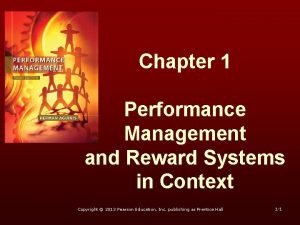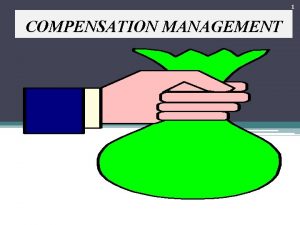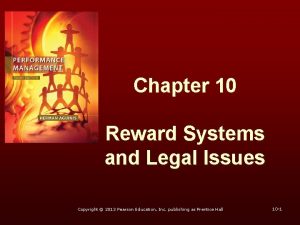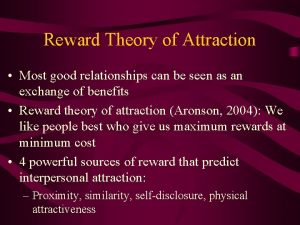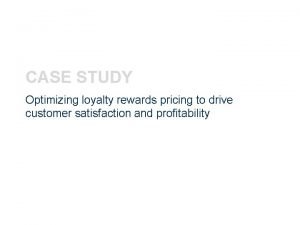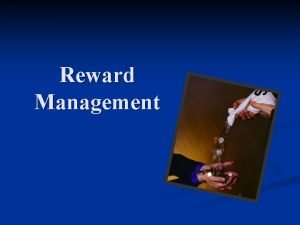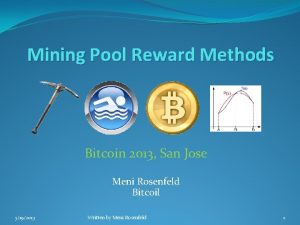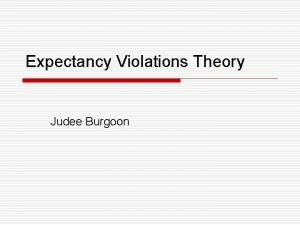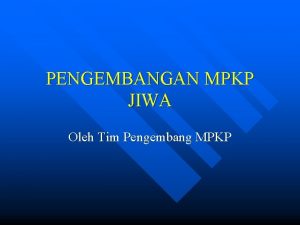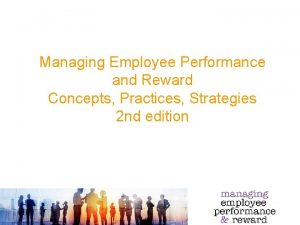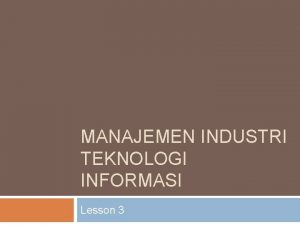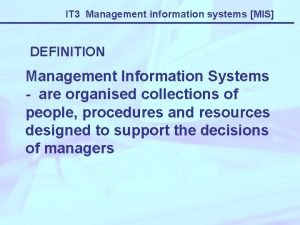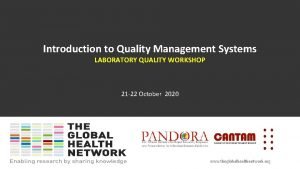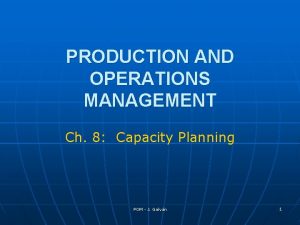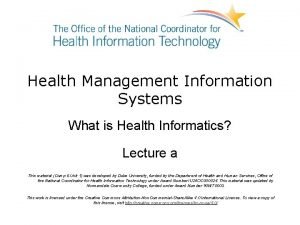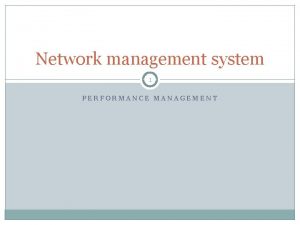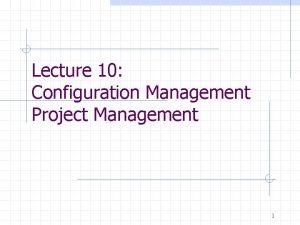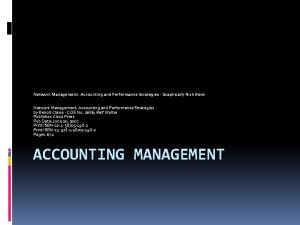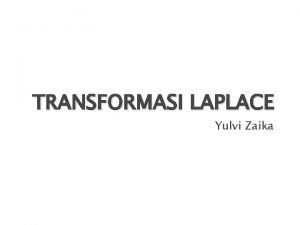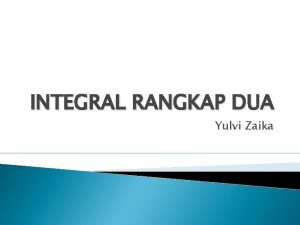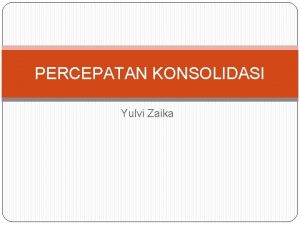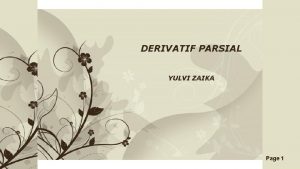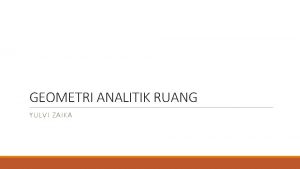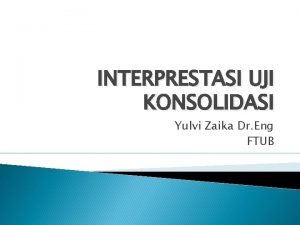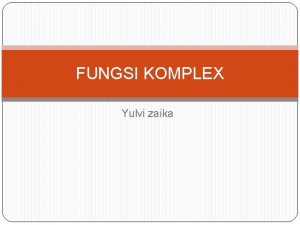REWARD SYSTEM YULVI ZAIKA Definition of Reward Management
























































- Slides: 56

REWARD SYSTEM YULVI ZAIKA

Definition of Reward Management • This management discipline is concerned with the formulation and implementation of strategies and policies, the purposes of which are to reward employees fairly, equitably and consistently in accordance with their value to the organization. • It deals with design, implementation and maintenance of reward systems (processes, practices, procedures) that aim to meet the needs of both the organization and its stakeholders.

The Role of the Human Resource Manager in the Reward System – Role of human resource manager in overall organizational reward system is to assist in its design and to administer the system – Administering the system – Carries responsibility of ensuring that system is fair to all employees and that it is clearly communicated to all employees – Ensuring that the system is fair places burden of minimizing reward inequities and employee’s perceptions of reward inequities squarely on the human resources manager – Little doubt exists that organizations need to do a better job of explaining and communicating their compensation system to employees 12 -3 – Many tools and techniques are available to assist human

Philosophy of Reward Management – Strategic sense: long-term focus & it must be derived from the business strategy – Total Reward approach: considering all approaches of reward (financial or not) as a coherent whole; integration with other HRM strategies – Differential reward according to the contribution – Fairness, equity, consistency, transparency

Impact of Comparable Worth – Theory holds that while true worth of jobs to employer may be similar, some jobs (especially those held by women) are often paid a lower rate than other jobs (often held by men) – Drawback – Determining worth of the jobs in question is difficult – How should job worth be established? – U. S. courts have generally rejected cases based on comparable worth claims – Although comparable worth has generally floundered in court, it has received considerable attention – At the collective bargaining table – In the political arena 12 -5

The Importance of Fair Pay – Little doubt exists that inadequate pay can have a very negative impact on an organization – Pay dissatisfaction can influence employees’ feelings about their jobs in two ways: – Can increase desire for more money – Can lower attractiveness of the job – An employee who desires more money is likely to engage in actions that can increase pay – These actions might include – Joining a union – Looking for another job – Performing better – Filing a grievance – Going on strike 12 -6

The Importance of Fair Pay – All of the consequences (except performing better) are generally undesirable by management – Better performance results only in those cases where pay is perceived as being directly related to performance – When job decreases in attractiveness, the employee is more likely – To be absent or tardy – To quit – To become dissatisfied with the job itself 12 -7

Model of the Consequences of Pay Dissatisfaction 12 -8

Pay Equity – Equity theory of motivation holds that – Employees have a strong need to maintain a balance between what they perceive as their inputs to their jobs and what they receive from their jobs in the form of rewards – Employees who perceive inequities will take action to eliminate or reduce them – Pay equity concerns whether employees believe they are being fairly paid – For example, if an employee believes he or she is underpaid, that employee will likely reduce expended effort by working more slowly, taking off early, or being absent – Similarly, if an employee believes she or he is being overpaid, that employee is likely to work harder or for longer hours 12 -9

Pay Equity – Several dimensions of equity to be considered when looking at pay equity – Internal equity – Addresses what an employee is being paid for doing a job compared to what other employees in the same organization are being paid to do their jobs – External equity – Addresses what employees in other organizations are being paid for performing similar jobs – Individual equity – Addresses issue of rewarding individual contributions; is very closely related to the pay-for-performance question – Organizational equity – Addresses how profits are divided up within the organizations 12 -10

Pay Equity – Employee interpretations of pay equity are based on their perceptions – Organizations should make these perceptions as accurate as possible – An employee can also feel good about one or more equity dimensions and feel bad about others – For example, an employee may feel good about his or her pay in comparison to what friends working in other organizations are making – She or he may also believe the company profits are fairly distributed within the company – However, this same person may be very unhappy about his or her pay relative to several other people in the same organization 12 -11

Pay Satisfaction Model – An employee’s perception of what pay should be depends on several other factors, including – Job inputs – Includes all the experience, skills, and abilities an employee brings to the job in addition to the effort the employee puts into it – The perceived inputs and outcomes of friends and peers – Refer to the individual’s perception of what friends and peers put into their jobs and what kind of pay they get in return – Nonmonetary outcomes – Refer to the fact that certain nonmonetary rewards can sometimes substitute for pay, at least up to a point – It makes allowances for employees who believe their pay exceeds what they think it should be – Research has shown that in such cases, people often experience feelings of guilt, inequity, and discomfort 12 -12

Model of the Determinants of Pay Satisfaction 12 -13

Total Reward (Armstrong 2009) All types of reward: • Non-financial as well as financial, • Indirect as well as direct, • Extrinsic as well as intrinsic. Each element is developed, implemented and treated as an integrated and coherent whole.

INTRINSIC AND EXTRINSIC – Intrinsic rewards – Internal to individual and are normally derived from involvement in certain activities or tasks – Examples – Job satisfaction and feelings of accomplishment – Extrinsic rewards – Directly controlled and distributed by organization and more tangible than intrinsic rewards – Examples – Pay and hospitalization benefits – Although differing, intrinsic and extrinsic rewards are closely related – Often an extrinsic reward provides recipient with intrinsic rewards

Intrinsic versus Extrinsic Rewards 12 -16

Selection of Rewards – Management must recognize what employees perceive as meaningful rewards – Pay is usually the first, and sometimes the only, reward most people think about – However, rewards should be viewed in the larger perspective as anything employees value – May include things such as – Office location – Allocation of certain pieces of equipment – Assignment of preferred work tasks – Informal recognition 12 -17

Selection of Rewards – Returns benefiting organization through distribution of awards can be realized only if desires of employees are known – Organizations should learn what employees perceive as meaningful rewards, which is not necessarily what management perceives – Traditionally, managers have assumed they are fully capable of deciding just what rewards employees need and want – Unfortunately, this is often not true – Studies have shown that employees tend to rank lack of recognition as the most probable reason good employees quit their jobs 12 -18

Selection of Rewards – Another false assumption is exemplified by fact that most organizations offer same mix of rewards to all employees – Studies show that many variables can influence employee preferences for certain rewards. They include – Age – Sex – Marital status – Number of dependents – Years of service – For example, older employees are usually much more concerned with pension and retirement benefits than are younger employees 12 -19

Selection of Rewards – When selecting types of rewards to offer, intrinsic benefits that might accrue as a result of the rewards need to be considered – Managers and employees alike consider only tangible benefits associated with a reward – External factors that place limitations on an organization’s reward system also exist – These factors (usually beyond the control of the organization) include such things as – Organization’s size – Environmental conditions – Stage in product life cycle – Labor market 12 -20

Relating Rewards to Performance – Free enterprise system is based on the premise that rewards should depend on performance – Performance–reward relationship is desirable at – Organizational or corporate level – Individual level – Employees will be motivated when they believe such motivation will lead to desired rewards – Many formal rewards provided by organizations are not related to performance – These rewards are almost always determined by organizational membership and seniority; they include – – – Paid vacations Insurance plans Paid holidays 12 -21

Relating Rewards to Performance – Other rewards, such as promotion, can and should be related to performance – Opportunities for promotion may occur only rarely – When available, higher positions may be filled – On basis of seniority – By someone outside the organization – Primary organizational variable used to reward employees and reinforce performance is pay – Even though many U. S. companies have some type of pay-for- performance program, most do a poor job of relating the two – Surveys repeatedly show that employees do not have much confidence about a positive relationship exists between the two – Evidence shows that paying for performance is working at the highest levels in many companies 12 -22

Relating Rewards to Performance – Why is the practice not more widespread? – Not easy to do; much easier to give everybody the same thing, as evidenced by the ever-popular across-the-board pay increase – Relating rewards to performance requires that performance be accurately measured, and this is often not easily accomplished – Requires discipline to actually relate rewards to performance – Many union contracts require that certain rewards be based on totally objective variables, such as seniority – No one successful formula for implementing a pay-for-performance program has yet been developed 12 -23

Preconditions for Implementing pay-for-Performance Program – Trust in management – If employees are skeptical of management, it is difficult to make a pay-forperformance program work – Absence of performance constraints – Jobs must be structured so that an employee’s performance is not hampered by factors beyond his or her control – Trained supervisors and managers – Supervisors and managers must be trained in setting and measuring performance standards – Good measurement systems – Performance should be based on criteria that are job specific and focus on results achieved 12 -24

Preconditions for Implementing Pay-for-Performance Program – Ability to pay – Merit portion of the salary increase budget must be large enough to get the attention of employees – Clear distinction among cost of living, seniority, and merit – In absence of strong evidence to the contrary, employees will naturally assume a pay increase is a cost-of- living or seniority increase – Well-communicated total pay policy – Employees must have a clear understanding of how merit pay fits into the total pay picture – Flexible reward schedule – It is easier to establish a credible pay-for-performance plan if all employees do not receive pay adjustments on the same date 12 -25

Job Satisfaction and Rewards – – – An employee’s general attitude toward the job – Organizational reward system often has a significant impact on level of employee job satisfaction – Manner in which extrinsic rewards are dispersed can affect intrinsic rewards (and satisfaction) of recipients There are five major components of job satisfaction: – Attitude toward the work group – General working conditions – Attitude toward the company – Monetary benefits – Attitude toward management Other components include – Employee’s state of mind about the work itself – Life in general – Health, age – Level of aspiration, social status, and political and social activities 12 -26

Job Satisfaction and Rewards – Organizational morale – Employee’s feeling of being accepted by and belonging to a group of employees – Through common goals – Confidence in desirability of those goals – Desire to progress toward the goals – Morale is the by-product of a group – Job satisfaction is more an individual state of mind – Two concepts are interrelated in that job satisfaction can contribute to morale and morale can contribute to job satisfaction 12 -27

The Satisfaction–Performance Controversy – “The path of least resistance” – Attempts to explain belief that a satisfied employee is necessarily a good employee – If a performance problem exists, increasing an employee’s happiness is far more pleasant than discussing with the employee his or her failure to meet standards – Although happiness eventually results from satisfaction, the latter goes much deeper and is far less tenuous than happiness – Two propositions concerning the satisfaction-performance theory exist – Traditional view is that satisfaction causes performance – Satisfaction is the effect rather than the cause of performance 12 -28

The Satisfaction–Performance Controversy – Performance leads to rewards that result in a certain level of satisfaction – Rewards constitute a necessary intervening variable in the relationship – Another position considers both satisfaction and performance to be functions of rewards – Satisfaction results from rewards, but current performance also affects subsequent performance if rewards are based on current performance – Research evidence generally rejects the more popular view that satisfaction leads to performance – It does provide moderate support for the view that performance leads to satisfaction 12 -29

The Satisfaction–Performance Controversy – Evidence also strongly indicates that – Rewards constitute a more direct cause of satisfaction than does performance – Rewards based on current performance enhance subsequent performance – Reviews of studies in the area stating that job satisfaction and job performance are related do not support a strong relationship – Found that “the best estimate of the true population correlation between satisfaction and performance is relatively low” – Lay people often tend to believe strongly that satisfied employees are more productive at work 12 -30

The Satisfaction–Performance Controversy – It has been clearly established that job satisfaction does have a positive impact on – Turnover – Absenteeism – Tardiness – Accidents – Grievances – Strikes – Experience, gender, and performance can have a moderating effect on these relationships – Organizations prefer satisfied employees simply because they make the work environment more pleasant – Although a satisfied employee is not necessarily a high performer, there are numerous reasons for cultivating employee satisfaction 12 -31

Other Factors Affecting Job Satisfaction – Wide range of both internal and external factors affect an employee’s level of satisfaction – Surveys have found that the top drivers of employee job satisfaction were – Pay, and benefits – Job security, and feeling safe in the work environment – Flexibility to balance work and life – Job satisfaction and motivation are not synonymous – Motivation is a drive to perform – Organizational reward systems can influence both job satisfaction and employee motivation – It affects job satisfaction by making the employee more or less comfortable as a result of the rewards received – It influences motivation primarily through the perceived value of the rewards and their contingency on performance 12 -32

Determinants of Employee Satisfaction and Dissatisfaction 12 -33

Components of Total Reward (Armstrong 2009) Base pay Transactional (tangible) Contingent pay rewards Total remuneration Employee benefits Total reward Learning and development Relational (intangible) The work experience rewards Recognition, achievement, growth Non-financial rewards

The 4 Ps of Reward – Pay : Salary, bonus, shares, etc. – Praise – Positive feedback, commendation, staff-of-the-year award, etc. – Promotion – Status, career elevation, secondment, etc. – Punishment – Disciplinary action, withholding pay, or criticism, etc

Derivation of Total Reward Job evaluation Grade & pay structure Market rate analysis Contingent pay Business & HR strategy Reward strategy Total Remuneration Employee benefits Allowances Performance management Non-financial rewards Total Reward

Strategic Reward Management – Where do we want our reward practices to be in a few years time? (vision) – How do we intend to get there? (means)

Reward Strategy – A declaration of intent that defines what the organization wants to do in the longer term to develop and implement reward policies, practices and processes that will further the achievement of its business goals and meet the needs of the stakeholders. – It gives a framework to other elements of reward management.

The structure & content of a Reward strategy – Environment analysis: – Macro-level: social, economical, demographic – Industrial level – Micro-level: competitors – Analysis of the „inner environment”: strategy, job evaluation, financial conditions… – Gap-analysis – Guiding principles – Broad-brush reward strategy – Specific reward initiatives

Job-evaluation A systematic process – For defining the relative worth/ size of jobs/roles within an organisation – For establishing internal relativities – For designing an equitable grade structure and grading jobs in the structure – To give an input for reward considerations

Dimensions of job evaluation – Relative or measured to an absolute scale – Relative: compares jobs to one another within the company – Absolute: compares to an „independent”, external measure – Analytical or non-analytical (global) – Analytical: measures factors or elements of the jobs – Non-analytical: measures the job as a whole

Types of Job Evaluation (Armstrong 2009) Analytical job evaluation (point-factor rating or analytical matching) – decisions on the relative value or size of jobs are based on an analysis of the degree to which various defined elements or factors are present in the form of demands on the job holder Non-analytical job evaluation (job classification or ranking) – whole jobs are described and compared to slot them into a defined grade or place them in a rank order or without analysing them into their elements Market pricing – jobs are placed in pay structures entirely on the basis of external relativities, ie market rates (a method of pricing jobs but not job evaluation as usually defined)

Types of Job Evaluation Non-analytical Evaluation Analytical Evaluation • Whole job ranking • Points rating • Paired comparisons • Proprietary schemes • Job classification

Job Evaluation: Scoring (Armstrong 2009) Factor Level 1 Level 2 Level 3 Expertise 20 40 Decisions 20 40 60 Autonomy 20 40 60 Responsibility 20 40 Interpersonal skills 20 40 Level 4 Level 5 Level 6 80 100 120 60 60 60 Total score = 360 80 80 100 120

Hay proprietary scheme – A group of role analysts, working as a panel assess the role (from an agreed job description and information) against a number of factors, which are known as the Hay Guide Chart Profile. – 1. Know – How – The level of knowledge, skill and experience required to perform the job successfully. – 2. Problem Solving – The complexity of thinking required, both in the type of problems come across and the extent to which the jobholder has precedent and/or assistance in solving them (applying their Know – How). – 3. Accountability – The impact the job has on the organization (i. e. the end result) and the extent to which the jobholder acts autonomously in achieving this.

Wage gaps – Wage gaps can occur in companies using international benchmarking in job evaluation. The cause is simple: – The market of top managers is usually international: they earn international wages, or they leave the firm – The market of workers with little or no qualification is local in (nearly) every case: they earn local wages. – In less developed countries this can lead to enermous wage gaps between the „top” and „bottom” employees.

Components of Total Remuneration – Base pay: Base pay is the fixed compensation paid to an employee for performing specific job responsibilities. It is typically paid as a salary, hourly (or in some situations piece rate). There is a tendency towards market orientation and the increasing role of qualifications. – Contingent pay: Individual contingent pay relates financial rewards to the – individual performance, organisation or team performance, – competence, – service, – contribution or – skill of individual employees. Consolidated pay: built into the base pay Variable pay: provided in the form of cash bonuses (increasing role nowadays). – Employee benefits: Elements of remuneration given in addition to the various forms of cash pay.

Contingent pay – Individual contingent pay is a good motivator (but to what extent? ) for those who receive it. – It attracts and retains better workers. – It makes labour related expenditures more flexible. – It can demotivate those who don’t receive it (depends on performance measurement) – Can act against quality and teamwork.

Types of individual contingency pays – Performance-related: increases basic pay or bonuses related to assessment of performance – Competence-related: Pay increases related to the level of competence – Contribution-related: pay is related both to inputs and outputs – Skill-based: pay is related to acquisition of skills – Service-related: pay is related to service-time

Team based pay – Pay is related to team performance – It can encourages teamwork, loyalty and co-operation – It can be demotivating on individual level (encourages social loafing)

Organisaton-wide schemes – Profit-Sharing Plans – organization-wide programs that distribute compensation based on an established formula designed around profitability – Gain Sharing – compensation based on sharing of gains from improved productivity – Employee Stock Ownership Plans (ESOPs) – plans in which employees acquire stock, often at below-market prices

Employee benefits – Attractive and competitive total remuneration – Provide for the personal needs – Increase commitment toward the organisation – Tax-efficient

Main types of Employee benefits – Pension schemes – Personal (and family) security: different types of insurances – Financial assistance: loans, house purchase schemes, discount on company services… – Personal needs: holidays, child care, recreation facilities, career breaks… – Company cars and petrol – Intangible benfits: quality of working life… – Other benefits: mobile phones, notebooks… – Cafeteria systems

Definition of the psychological contract “The perceptions of both parties to the employment relationship, organization and individual, of the reciprocal promises and obligations implied in that relationship” The state of the psychological contract is concerned with whether the promises and obligations have been met, whether they are fair and their implications for trust.

The Psychological Contract Framework (David Guest) The Good Employer & The High Quality Workplace The Deal Satisfied And Productive Workers

Total remuneration in recession – It is a good chance to rethink and renew the remuneration system – Share of contingency payment should increase – Employer benefits, that do not need short term expenditure will increase: – Company car – Saturday-year or sabbatical (free time) – Share-options
 Yulvi zaika
Yulvi zaika Penurunan tiang tunggal
Penurunan tiang tunggal Performance management chapter 1
Performance management chapter 1 Objectives of compensation management
Objectives of compensation management Reward system and legal issues
Reward system and legal issues Role of reward system
Role of reward system Reward from god
Reward from god Where is the reward center of the brain
Where is the reward center of the brain Logo multibeauty
Logo multibeauty Dadhicha system
Dadhicha system What is the reward theory of attraction
What is the reward theory of attraction Profit are the reward for
Profit are the reward for Optimize reward program
Optimize reward program Reward pyramid
Reward pyramid Components of reward
Components of reward Othello summary act 2
Othello summary act 2 Reward method pps
Reward method pps Communicator reward valence
Communicator reward valence Communicator reward valence
Communicator reward valence Reward
Reward Liveschoolinc
Liveschoolinc Reward income
Reward income Compensatory reward adalah
Compensatory reward adalah Reward investment
Reward investment Managing employee performance and reward
Managing employee performance and reward Inurl:responsible disclosure reward
Inurl:responsible disclosure reward Reward-to-risk ratio formula using beta
Reward-to-risk ratio formula using beta Risk reward quest
Risk reward quest Schneider electric rewards
Schneider electric rewards A good deed deserves a reward.
A good deed deserves a reward. Favors given to reward party loyalty
Favors given to reward party loyalty Siapakah pelanggan setia itu
Siapakah pelanggan setia itu Celebrating performance accenture
Celebrating performance accenture Pyramid levels of management
Pyramid levels of management Top management middle management first line management
Top management middle management first line management Top management and middle management
Top management and middle management Introduction to gym management system
Introduction to gym management system System architecture diagram for hospital management system
System architecture diagram for hospital management system Open closed and isolated system
Open closed and isolated system Digestive respiratory and circulatory system
Digestive respiratory and circulatory system Yard management system definition
Yard management system definition What does lims stand for
What does lims stand for What is management information systems
What is management information systems Quality management system in laboratory
Quality management system in laboratory Capacity in operations management
Capacity in operations management Shortliffe
Shortliffe Health management information system definition
Health management information system definition Tawfik baba
Tawfik baba Time management in human resource management
Time management in human resource management Performance management in network management
Performance management in network management Asset management vs project management
Asset management vs project management Configuration management project management
Configuration management project management E-crm and scm
E-crm and scm Retail management retail store organizational chart
Retail management retail store organizational chart Principles of project cost management
Principles of project cost management Scientific management vs administrative management
Scientific management vs administrative management Accounting management in network management
Accounting management in network management


